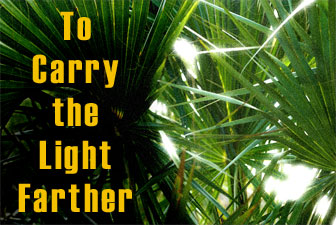|
On January 2, 1956, five missionaries in Ecuador began a long-desired project. They were going to make contact and lay the groundwork for sharing the Gospel of Jesus Christ with the so-called Auca Indians. They called their effort "Operation Auca." The “Aucas” (or Waorani, their name for themselves) were a very remote and mysterious people group with a reputation for murderous hostility to all outsiders. Jim Elliot, Peter Fleming, Ed McCully, Roger Youderian, and missionary pilot Nate Saint founded a base camp consisting of a tree house and a landing strip at the site they christened Palm Beach on the Curaray River, within a few hours walk of a Waorani settlement.
On Friday, January 6, the men had their first direct, friendly contact when three Waorani, a man and two women, visited the camp and stayed for several hours. On January 8, another party of Waorani came from the same village and speared all five men to death.
The sudden, shocking deaths of these five young American missionaries became a major story in American secular and religious magazines and newspapers in the following days. The story quickly acquired iconic status among American Evangelicals, especially when Elisabeth Elliot and her daughter Valerie (widow and child of of Jim Elliot), and Rachel Saint, the sister of Nate Saint, went to live among the Waorani 33 months after the killings. The women were visited on occasion by Marilou McCully, the widow of Ed McCully. Together they began work that successfully planted a Christian community among the tribe and led eventually to the translation of the Bible into the Wao language.
Many Evangelicals credit their own entry into Christian service to the example of the five men. Many more have been inspired by retellings of the story in numerous books, articles, radio and television programs, films, and websites.
The College Archives & Special Collections (Buswell Library) and the Billy Graham Center Archives—two Wheaton College repositories—have jointly prepared this online exhibit in commemoration of the 60th anniversary of the five missionaries' deaths. But the story of the men’s work and deaths, and its lasting influence is not solely or even mainly a Wheaton College story. Three—Jim Elliot, Nate Saint, Ed McCully—were graduates of Wheaton. Roger Youderian was a Northwestern College graduate and Peter Fleming graduated from the University of Washington. Because Wheatonites did play an important part in the story, we are emphasizing that aspect in the exhibit, drawn entirely from materials in the two Wheaton College repositories. These items illustrate the character and motivations of Jim, Peter, Ed, Nate, and Roger. The exhibit examines the actual details of their mission, their deaths, the immediate aftermath of the event, and its impact, particularly on the Waorani and in the United States.
Even so, the story we can tell is limited, by necessity, to the documents in our two archives. For example, the very important part Rachel Saint played in the story is only briefly mentioned because our two archives contain few documents about her work. For the same reason, there is little about the role of Wycliffe Bible Translators, apart from Catherine Peeke’s essential contribution.
The story presented here is only a small part of the much larger story of the planting and growth of the Christian faith among the Waorani, to which we can only briefly refer in this exhibit. But we offer this exhibit as a part of that story and as a part of the even larger, epic tale of the ongoing fulfillment of Jesus’ commission to “Go into all the world and preach the Gospel to every living creature.” (Matthew 28: 18-20)
|

